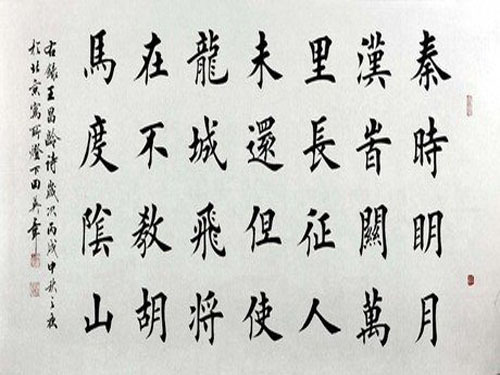Calligraphy criticism and commercial advertising
In the face of developed contemporary media, calligraphy criticism looks like extraordinary excitement and prosperity. Because we can often see a variety of mass media, including professional media magazines, numerous networks, the introduction and introduction of calligraphers and calligraphic works are endless. However, is it a calligraphy criticism? Indeed, the appearance of this seemingly calligraphic criticism is essentially a special "commercial advertisement," which we call "media criticism."
This golden Cocoon warm insole has a soft, comfortable surface made of velvet with a porous elastic material in the middle and a hollow cotton layer, while the bottom is made of post-thick wool felt.
This Warm Insoles are ideal for use in shoes during the cold winter months, especially for outdoor sports or work.
Warm Insoles Warm Insoles,Warm Insoles For Shoes,Thermal Insoles,Thermal Insoles For Shoes Henan Bangni Biotechnology Co.,LTD , https://www.insolesbangni.com
When a calligraphy work is counted as a square foot of a commodity, the calligraphy work has commercial attributes. When mass media became an integral part of the business environment, many calligraphers complained that there were too many components of commercial advertising in "media criticism." On the one hand, calligraphers are trying to get into this "media criticism." There is nothing wrong with commercial advertising. However, this is not the responsibility of academic criticism. The difference between academic criticism and commercial advertising is not only reflected in the content of ideas, but more importantly, it insists on a cultural value judgment other than commercial value.
It is precisely because of the proliferation of commercial advertisements in the “media criticism†and the lack of calligraphy criticism in the real academic sense. Therefore, there are too many people who express their dissatisfaction with calligraphy criticism and the inherent functions of calligraphy criticism. They are being spoken by media propaganda and conferences. Instead, this weak professional criticism has become quite suspicious. The so-called calligraphic critics were recruited as tools for propaganda, giving calligraphers their packaging and forgetting their responsibilities. Calligraphy criticism became passive, cheap, and ineffective.
Everyone is constantly distort the meaning of calligraphy criticism, from the original “Calligraphy Criticismâ€, to the discovery and analysis of academic issues and errors, to the discovery, judgment, and interpretation of the academic value of calligraphers and calligraphers. To "Calligraphy and Praise", it is thought that criticism is nothing more than to say good things and to advocate drummers, only as an empty and empty speech bubble.
With the development and maturity of the painting and calligraphy market, strong capital and complete market conditions, not only can it be equipped with a perfect sales system, but also can be equipped with a set of related business value standards. The ** of commercial value and academic value is reflected in, for example, when the work enters the capital operation, there will be a set of rules for the operation of commercial capital. For example, the size of various official titles in an academic group is corresponding to the price level. The award-winning author's price rankings for calligraphy works, association-level price rankings, etc. Commercial advertising will promptly imply that everyone: The price of certain works has been steadily rising at the auction, and there is a huge room for appreciation. Or, use the media as a ranking for calligraphers, the most collectible calligraphers, the most calligraphers of appreciation space, the most promising calligraphers, the most creative calligraphers, etc. Most of the media’s criticisms are Instill an idea that the sales volume proves the value of the goods.
Of course, we have no reason to depreciate the huge success of cultural markets and commercial advertising. However, the interpretation and interpretation of calligraphy criticism must show that the commercial success of the sales volume symbol cannot directly equate to aesthetic success. Square foot unit price, auction transaction record, or web click rate are not the first principles for the history of calligraphy; sometimes it is just the opposite. Once the market recognizes its own work and becomes a commercial sign, the power of calligraphy creation comes from the values ​​recognized by the market. Changing or deepening one's creative style means that the replacement of a brand is highly dangerous. On the contrary, the original motivation of calligraphy creation, the pursuit of beauty, the love of culture, and the exploration of the soul have become empty ideas. Obviously, the calligraphic criticism of talking about aesthetics or talking about culture provides other, far-reaching assessments of meaning and shows another perspective. If calligraphic criticism abandons this vision and mixes it with commercial advertisements, people have the right to think that the critics are dereliction of duty.
The struggle between academic conscience and secular human emotion in calligraphy criticism is not only a struggle within the self, academic conscience and commercial value will also be a long-term struggle inside and outside of the critical circles. Under the conditions of a market economy, how to grasp the essence and role of academic criticism and how to maintain a sincere, serious and independent academic taste of criticism is the primary condition for critics to stand on their own feet.
In the critical circles, we have the most critical need for the current status of criticism. It is now necessary to restore a critical quality of criticism and create a sword of criticism with an academic edge and a spiritual edge. Only in this way can it manifest its true value in order to clarify the frequently misunderstood and increasingly vague boundaries in the commentary.
